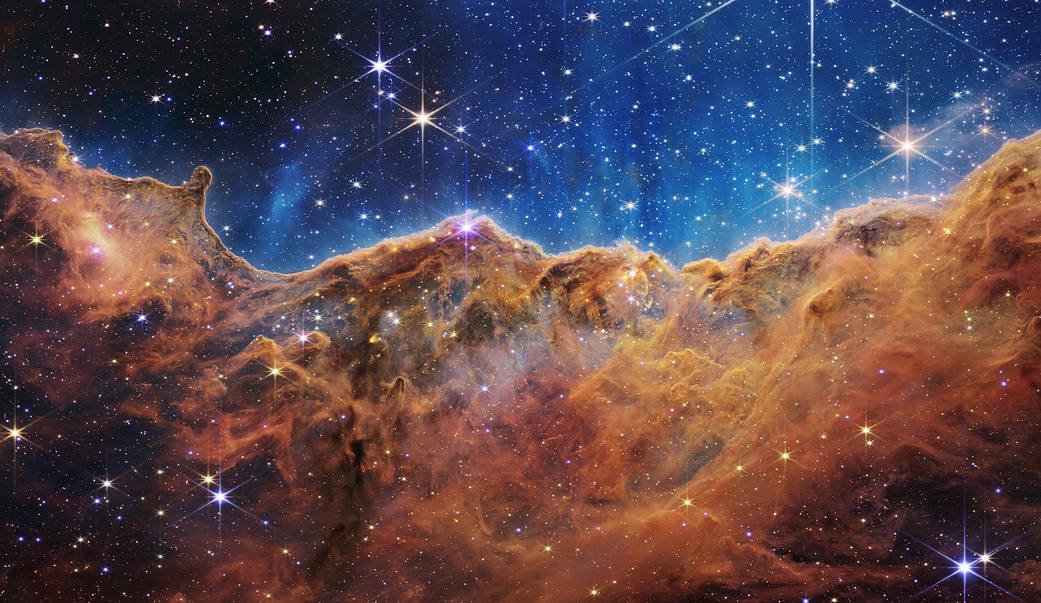A star nursery found over 250 years in the past will train astronomers new issues about how stars come to life with the assistance of the piercing imaginative and prescient of the James Webb House Telescope.
The highly effective new US$10 billion observatory, situated in deep house about 1 million miles from Earth, took a brand new picture of a star-forming area inside the Carina Nebula. The image captures distinctive particulars that beforehand eluded the Hubble House Telescope.
The Carina Nebula has been a well-liked goal to review by way of the years as a result of it demonstrates a cosmic occasion that lasts for an especially temporary time — solely about 50,000 to 100,000 years. The nebula lies within the Milky Manner about 7,600 light-years away and is house to different notable cosmic objects, such because the Keyhole Nebula and the unstable supergiant star, Eta Carinae. Astronomers have given its options some pet names, too, like Mystic Mountain and Cosmic Cliffs.
The brand new Webb photograph (seen on the high of this web page) clears away the cobwebs of gasoline and mud to point out a whole bunch of never-before-seen stars within the area, with bubbles, cavities, and jets blowing out from extra child stars. The telescope’s skill to penetrate the mud display screen is so robust, it’s even capable of catch the sunshine of galaxies lurking far past the area, mentioned Amber Straughn, deputy venture scientist for Webb, throughout a NASA presentation on Tuesday.
“Each dot of sunshine we see right here is a person star, not in contrast to our solar, and lots of of those possible even have planets,” she mentioned.
Referred to as the Cosmic Cliffs, the realm captured seems like an arid desert panorama, with rusty rolling mountains and canyons sprawling beneath a starry sky. Monumental pillars loom over a glowing wall of gasoline, and radiation and house climate from new child stars blow out bubbles. An eruption on the high of the ridgeline purges extra gasoline and mud.
These options reside within the coronary heart of a gaseous cavity, researchers say. However a cosmic tug-o-war by way of the interactions of gases and particles can ensue. Webb’s research of the Carina Nebula and different nurseries might assist researchers resolve the age-old thriller of how gasoline and mud — the uncooked supplies for stars and planets — might additionally work to forestall new births.
“There is a flip aspect of the story,” Straughn mentioned. “These identical processes can serve to form of erode away this materials and cease star formation.”



Webb, a collaboration of NASA, the European House Company, and the Canadian House Company, will observe a number of the oldest, faintest gentle within the universe. Astronomers anticipate Webb will spark a golden age in our understanding of house. The brand new Carina Nebula photograph was among the many first full-color photographs launched publicly on July 12, marking the start of scientific operations for the observatory.
Scientists have known as out a number of the outstanding particulars Webb has revealed within the new photograph, like an odd arch bending out of the area. Vapor seems to rise from the celestial “mountains” — searing gasoline and mud ejecting from the star nursery due to ultraviolet radiation.
“We see examples of constructions that, actually, we do not even know what they’re, like what is going on on right here?” Straughn mentioned, stating a component within the picture. “The information is simply so wealthy.”
